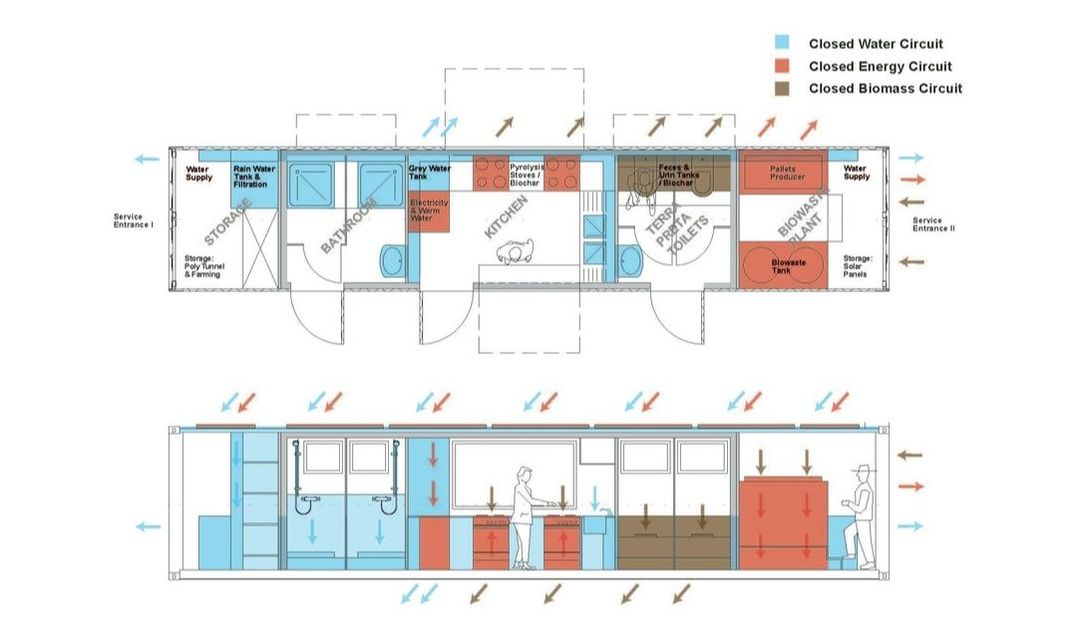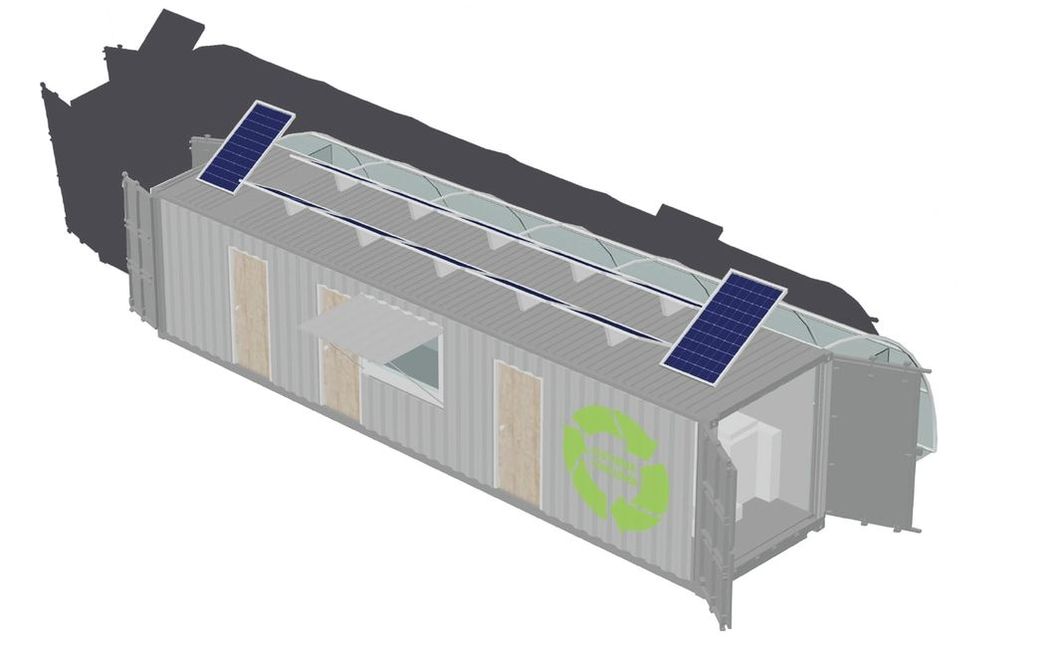The Initiative
We are confronted with a growing amount of crisis worldwide to an increasing number of displaced people, who are forced to live their lives in refugee camps. Furthermore thousands of people find themselves immigrating to informal settlements in urban environments unprepared for a quick population growth, in both cases, all too often the inhabitants are not being offered appropriate living conditions and the capacity to provide for themselves.
The sustainer aims to bring sustainable and empowering solutions to cover the needs of people in such situations. A sustainer is a standard shipping container re-designed to provide the basics to rapidly sustain a resilient community focusing on three fundamental interconnected aspects: the people, the plants and the place. The sustainer will provide: food through sustainable adaptive agriculture, cooking, water and sanitation infrastructures, energy supply and materials to provide shelter and boister living conditions. As it meets the standard container shipping norms, it can easily be loaded and transported worldwide.
The sustainer contains, in a concentrated and versatile form, the best practices know~how and low~tech that ecovillages have gathered through out decades of autonomous and wholesome living in harmony with nature. Equally important, the sustainer aims to empower people by offering back the right to decide on their own food, hence regaining the power to be self~sufficient. Also through the sharing of resources, the sense of community gets stronger.
The sustainer aims to bring sustainable and empowering solutions to cover the needs of people in such situations. A sustainer is a standard shipping container re-designed to provide the basics to rapidly sustain a resilient community focusing on three fundamental interconnected aspects: the people, the plants and the place. The sustainer will provide: food through sustainable adaptive agriculture, cooking, water and sanitation infrastructures, energy supply and materials to provide shelter and boister living conditions. As it meets the standard container shipping norms, it can easily be loaded and transported worldwide.
The sustainer contains, in a concentrated and versatile form, the best practices know~how and low~tech that ecovillages have gathered through out decades of autonomous and wholesome living in harmony with nature. Equally important, the sustainer aims to empower people by offering back the right to decide on their own food, hence regaining the power to be self~sufficient. Also through the sharing of resources, the sense of community gets stronger.
3P's
If we look at nature, we can observe that all elements interact with each other and are set in a close knit cyclical interchanging relationship. The Permaculture principles attempt to emulate the way nature works by bringing together PEOPLE, PLACE and PLANTS into one cycle.
Our aim with the sustainer is to be able to foster a community in a sustainably wholesome and resilent way by providing the means to establish and nourish such a living cycle, which is firmly rooted in nature.
Our aim with the sustainer is to be able to foster a community in a sustainably wholesome and resilent way by providing the means to establish and nourish such a living cycle, which is firmly rooted in nature.
HOW IT WORKS
The beauty of the sustainer's design lies in its circularity. It will be connected to all natural resource cycles, this using all available ones in the most efficient way and with the least amount of waste generation.
The settlers (people) will be producing their own food, water and energy, which reinforces the sense of community. The biomass produced by people will be recycled to enrich the soil (place). A rich soil will provide a lush vegetal growth (plants).
Some of the cycles in more details are:
The settlers (people) will be producing their own food, water and energy, which reinforces the sense of community. The biomass produced by people will be recycled to enrich the soil (place). A rich soil will provide a lush vegetal growth (plants).
Some of the cycles in more details are:
- the water cycle, through means of rainwater collection and filtration, grey water use and urine tank
- the biomass cycle, through means of a biomass tank, feces tank and bio-char producer for terra preta.
- the energy cycle, through means of a pallets producer, a pyrolysis stove, a solar energy and evti wind energy plant, which will also generate electricity and warm water.
|
|
ROADMAP 2018/19
January - April: Detailed planning and design of first prototype development for the Weltkunstzimmer (Düsseldorf, Germany) location.
May - August: Construction and on-site implementation of the protype.
September - October: Prototype exhibition and first testing within the exhition `Inside Eclology - Environment as Interaction´ at the Weltkunstzimmer.
October onwards: In-depth usage and testing . Location still to be determined! Development of further funding scheme.
May - August: Construction and on-site implementation of the protype.
September - October: Prototype exhibition and first testing within the exhition `Inside Eclology - Environment as Interaction´ at the Weltkunstzimmer.
October onwards: In-depth usage and testing . Location still to be determined! Development of further funding scheme.



